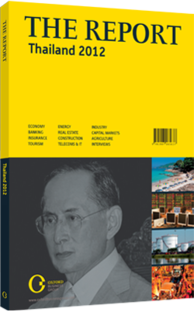OBG talks to Anudith Nakornthap, Minister of Information and Communication Technology

Interview: Anudith Nakornthap
How is the ministry seeking to accommodate the rapid growth in demand for data services?
ANUDITH NAKORNTHAP: Up until 2006 Thailand’s score in the global rankings of IT competitiveness was quite good, coming in at 34th in the World Economic Forum’s ranking that year. But our score has slipped significantly in most sectors since the coup, especially in telecoms, where we dropped to 54th worldwide in 2012. For the past five years the sector did not have a good plan. Our policies for 2012 and for the duration of our term are designed to expand access and efficiency of networks. We are aiming to increase the penetration rate for broadband from less than 20% to 80% within the next four years. There are many ways to do this, aside from fibre alone, and we have already started tests of a 4G LTE network as of January 2012, for example.
What do you see as the future of the two state-owned enterprises (SOEs), CAT Telecom and Telephone Organisation of Thailand (TOT)?
ANUDITH: The two SOEs do many of the same things and target the same businesses. We are working with the boards of each company to adjust the business plans and find specific areas where there is duplication and redundant investment. One example is in fibre to the home provision, where both CAT and TOT have invested in capacity, raising the possibility of uniting their networks. Over the longer term, we will get the two SOEs to manage their assets and sell off any business that is not profitable, setting targets for their performance.
We expect both SOEs will grow rather slowly in 2012, as both organisations analyse their balance sheets and get rid of any loss-making businesses. Both CAT and TOT rely heavily on subsidies that will be removed over the next couple of years. To ensure the future of the organisations the ministry will make sure all of their investments fit within their business plans and generate revenue over the longer term. The two firms have the advantage of receiving the concessions from their build-operate-transfer (BOT) agreements with private operators. But it will be crucial to find non-concession revenues. We would like to set up a separate company, with CAT and TOT as shareholders, to manage BOT assets like towers, of which there are about 35,000 nationwide. This type of infrastructure sharing will generate revenue for the two SOEs in future, but also ensure fair access to any new entrant to the market, under a 3G licence, for instance. This will be crucial to how the two companies survive in future. They have a long history in the telecoms industry.
What initiatives is the ministry undertaking to support the development of the Thai IT sector, particularly home-grown software?
ANUDITH: The low rate of data penetration currently has not attracted many investors to the software market. As the government moves to facilitate access and drive penetration of telecoms services, and data in particular, the market will get bigger and more developers will get involved. You can already see that with the launch of True H on a high-speed packet access network. There are also more and more applications from Thai developers on platforms like the Apple App Store.
Another key policy of the government is to provide tablet computers to all first-year primary school students. Although this is an initiative under the Ministry of Education, our ministry is in charge of buying the tablets and providing content for them. We plan to have the Software Industry Promotion Agency help develop software for these tablets.
Meanwhile, the government is moving an increasing number of its functions online. We estimate that some 800 government services can be conducted or at least facilitated online, which will save time and money for Thai citizens. We also kicked off the government cloud service in January 2012, freeing government bodies from the responsibility of having to procure their own equipment and software. We are taking the first quarter of 2012 to evaluate how well the cloud works, but we expect it to significantly reduce the state’s IT costs.
You have reached the limit of premium articles you can view for free.
Choose from the options below to purchase print or digital editions of our Reports. You can also purchase a website subscription giving you unlimited access to all of our Reports online for 12 months.
If you have already purchased this Report or have a website subscription, please login to continue.

